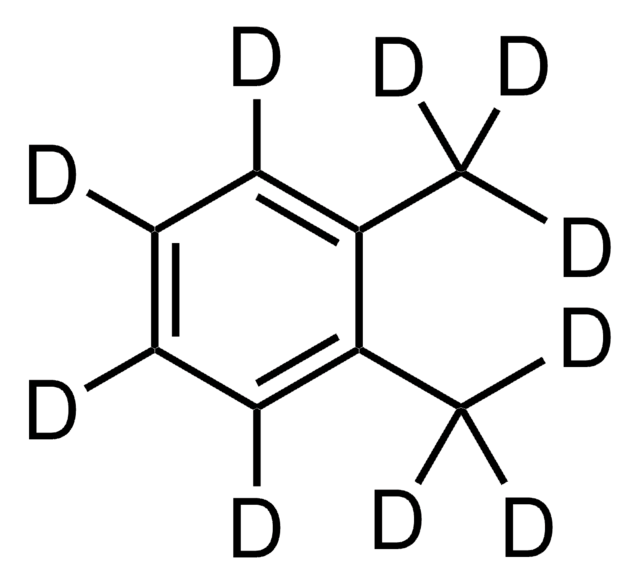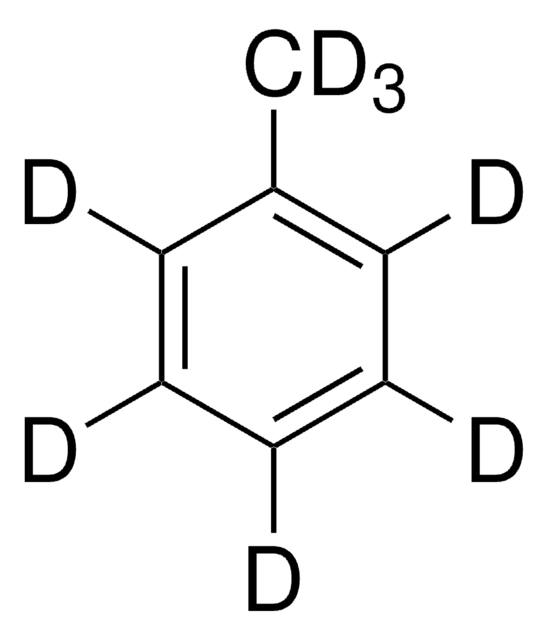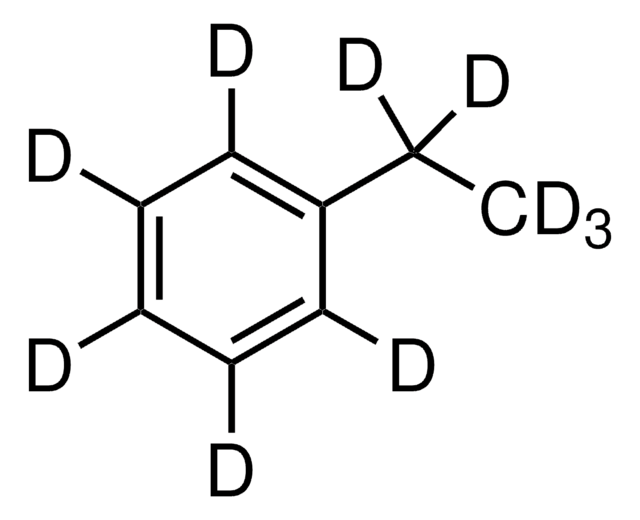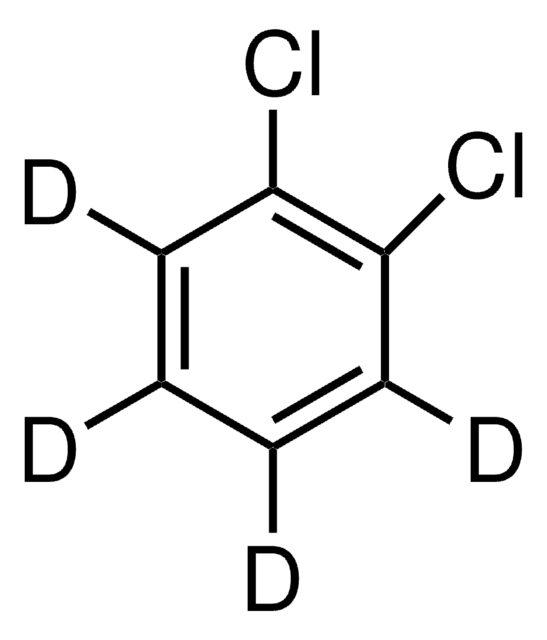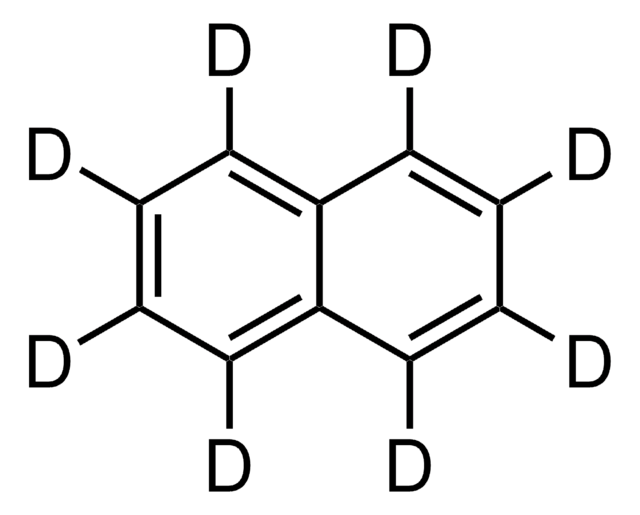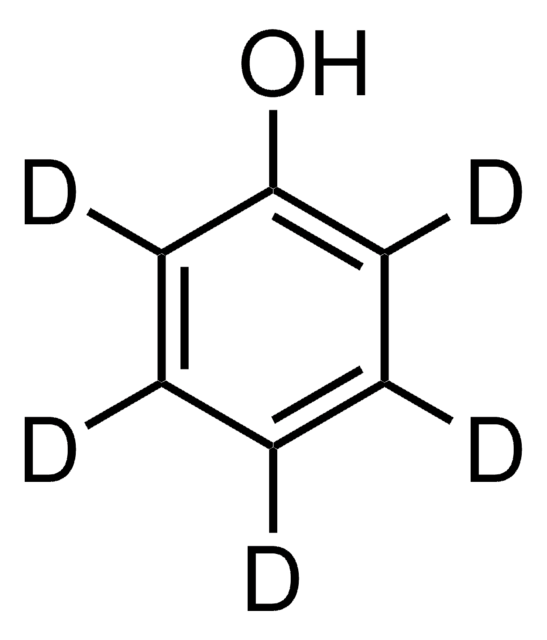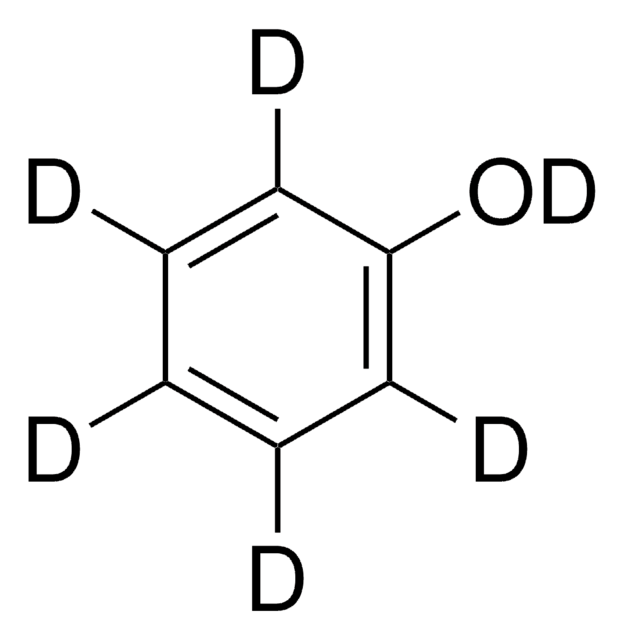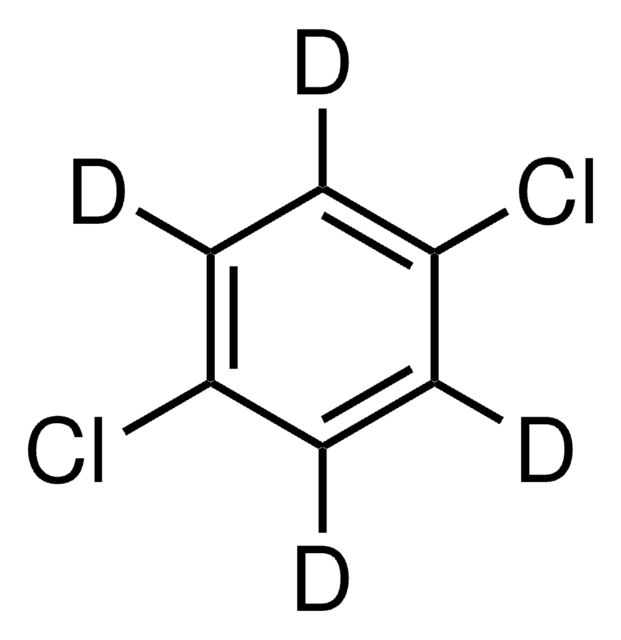175919
m-Xylene-d10
98 atom % D
Synonym(s):
1,3-Dimethylbenzene-d10
About This Item
Recommended Products
isotopic purity
98 atom % D
Quality Level
Assay
99% (CP)
form
liquid
technique(s)
GC/MS: suitable
NMR: suitable
impurities
≤0.001% water
water
refractive index
n20/D 1.497 (lit.)
bp
138-139 °C (lit.)
density
0.95 g/mL at 25 °C (lit.)
mass shift
M+10
SMILES string
[2H]c1c([2H])c(c([2H])c(c1[2H])C([2H])([2H])[2H])C([2H])([2H])[2H]
InChI
1S/C8H10/c1-7-4-3-5-8(2)6-7/h3-6H,1-2H3/i1D3,2D3,3D,4D,5D,6D
InChI key
IVSZLXZYQVIEFR-ZGYYUIRESA-N
General description
Signal Word
Danger
Hazard Statements
Precautionary Statements
Hazard Classifications
Acute Tox. 4 Dermal - Acute Tox. 4 Inhalation - Aquatic Chronic 3 - Asp. Tox. 1 - Eye Dam. 1 - Flam. Liq. 3 - Skin Irrit. 2 - STOT SE 3
Target Organs
Respiratory system
Storage Class Code
3 - Flammable liquids
WGK
WGK 2
Flash Point(F)
77.0 °F - closed cup
Flash Point(C)
25 °C - closed cup
Regulatory Information
Choose from one of the most recent versions:
Already Own This Product?
Find documentation for the products that you have recently purchased in the Document Library.
Our team of scientists has experience in all areas of research including Life Science, Material Science, Chemical Synthesis, Chromatography, Analytical and many others.
Contact Technical Service
